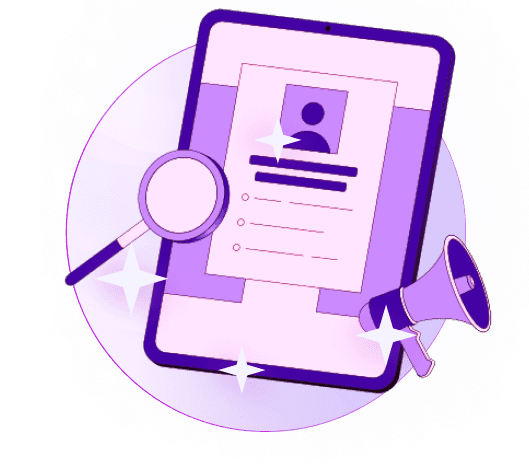Blogs
Articles

How to Utilize RB2B Data for Better Understanding Your Website Visitors
In today’s digital landscape, knowing who visits your website is more important than ever. Understanding your visitors can help you tailor your content, optimize your marketing efforts, and significantly enhance your lead generation. One effective way to gain this insight is through RB2B (Reverse Business to Business) data.
But what exactly is RB2B data, and how can you utilize it to get to know your website visitors better? Let’s dive in!
What is RB2B Data, and Why Should You Care?
RB2B data involves using various tools to uncover the businesses behind the anonymous traffic to your website. While many visitors come and go without leaving a trace, this data helps you identify them, giving you a window into what types of companies are engaging with your content. This can include information about their industry, company size, and even their interests.
By understanding this data, you can tailor your marketing messages, optimize your sales outreach, and even shape your product offerings to better suit the companies that are already showing interest in what you have to offer.
So, why care about this? In simple terms, it’s about making the most of every visitor who graces your digital doorstep. Instead of casting a wide net and hoping for the best, you can develop a targeted approach that speaks directly to the businesses that align with your services. Let’s explore how to dig deeper into this data.
Analyzing Website Visitor Data: Steps to Take
Before diving into the nitty-gritty of leveraging RB2B data, remember that having clear, focused goals is key. Below are practical steps you can take to analyze your visitor data effectively:
1. Integrate RB2B Tools into Your Workflow
Harnessing RB2B data starts with utilizing the right tools. There are several platforms designed to identify companies visiting your site and collect data on them. When integrating these tools, look for ones that can enrich your existing data and automate your processes.
For instance, if you’re looking for a seamless solution, tools like Persana.ai not only generate actionable lead lists based on RB2B insights but also enrich that data with contact details and other critical information. By automating these tasks, you free up time to focus on actually engaging with those leads rather than getting bogged down in manual data entry.
2. Segment Your Audience for Tailored Approaches
Once you have collected RB2B data, it's crucial to segment your audience. Grouping visitors by industry, company size, or level of engagement will allow you to tailor your marketing messages more effectively. For example, if you notice a spike in visits from tech companies, you could:
Create blog content that addresses their specific pain points
Design targeted email campaigns offering solutions specifically for tech-related issues
Tailoring your approach ensures that you speak directly to the needs of different visitor segments, improving your chances of conversion. Remember, visitors are more likely to engage with content that feels personalized and relevant to their unique situations.
3. Track Visitor Engagement and Refine Your Strategy
Tracking how visitors engage with your site once you have identified them becomes crucial. Tools associated with RB2B data often include analytics features that show which pages are receiving the most traffic and how long visitors stay.
Use this information to refine your strategy continually. If a particular blog post or landing page drives a lot of engagement, consider creating additional content along those lines or even developing targeted offers for those visitors.
The bottom line is that by analyzing the data you have at your disposal, your marketing efforts can become more tactical rather than haphazard.
Putting It All Together: A Roadmap to Enhanced Lead Generation
At this point, you might be wondering about the next steps. Combining RB2B data insights with actionable strategies will enhance your lead generation efforts. Once you have segmented your audience and refined your approaches, consider creating personalized outreach campaigns.
For example, if you find that a company in the healthcare sector has visited your site multiple times, sending them a tailored proposal or an invitation to a webinar relevant to their needs could open the door to a valuable conversation.
Moreover, tools like Persana.ai can streamline this entire process by not only helping you identify potential leads but also by providing you with enriched data and contact information. Imagine being able to launch an email campaign directly to the decision-makers at the companies already interested in what you offer! That’s the power of data-driven lead generation.
Final Thoughts
Utilizing RB2B data is like having a treasure map that leads you straight to potential opportunities. By integrating the right tools, segmenting your audiences, and refining your approach based on real-time analytics, you can transform how you understand and engage with your visitors.
In today’s competitive landscape, standing out means being intentional about how you connect with potential leads. Take the time to leverage RB2B insights fully, and you’ll be better positioned to attract and convert the right audience.
Ready to take your lead generation to the next level? Consider integrating Persana.ai into your strategy today. With features that help automate your outreach, enrich your lead lists, and find contact information, it’s the perfect partner for any business looking to deepen its understanding of website visitors and enhance its marketing efforts. Explore how Persana.ai can significantly improve your sales prospecting and watch your business thrive!

Create Your Free Persana Account Today
Join 5000+ GTM leaders who are using Persana for their outbound needs.
How Persana increases your sales results
One of the most effective ways to ensure sales cycle consistency is by using AI-driven automation. A solution like Persana, and its AI SDR - Nia, helps you streamline significant parts of your sales process, including prospecting, outreach personalization, and follow-up.



